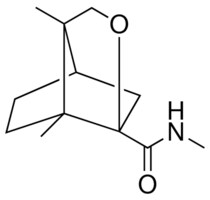Age range 24—36 yrs; height range — cm; weight range 59—75 kg. The relationship between the efficacy of resuscitation and the mattresses and backboards used in acute care units, has been studied previously. Taken together the results indicate that an adequate compression frequency and depth are achieved without the use of the CPR function of the air mattresses [9]. Table 1 Effect of mattress type on the compression frequency, compression depth and hands-on time. Resuscitation with a closed air system, e. CPR was carried out on the manikin as follows: 
| Uploader: | Brazil |
| Date Added: | 26 November 2004 |
| File Size: | 56.39 Mb |
| Operating Systems: | Windows NT/2000/XP/2003/2003/7/8/10 MacOS 10/X |
| Downloads: | 16137 |
| Price: | Free* [*Free Regsitration Required] |
The test persons were not 44.3.0.0 feedback during the resuscitation sessions which might have influence on the results of compression frequency and depth i. Open in a separate window.
PART 4 - GENERAL CASE MANAGEMENT POWERS
They were fully informed about the test procedures in advance. The nursing students gave their verbal consent to participate. Please review our privacy policy.

The authors received no funding cor an external source. Foam mattresses with higher specifications perform well and do not need a supporting hard, flat surface inserted between the mattress and patient.
Quality of cardiopulmonary resuscitation on manikins: Analyses were conducted using proc mixed of SAS R software version 9. During the actual testing no advice or feedback on either parameters were given to the resuscitators. Acknowledgement We are indebted to Mr.
Performance of different support surfaces during experimental resuscitation (CPR)
Who should be sleeping in which bed? European Resuscitation Council Guidelines for Resuscitation The authors declare the following conflict of interests: Effect of mattress deflection on CPR quality assessment for older children and aldolescents. Bioengineering models of deep tissue injury. Ethical issues Ethical committee review was not required. These results indicate that resuscitation is dependent of the mode of action of the mattress and whether the mattress-specific CPR function was used or not.

We have examined the functionality and performance of different types of mattresses during cp resuscitation. This is line with recent findings by Sainio et al. Resuscitation with a closed air system, e. Repeated measurement ANOVA models were used for most of the variables in order to explore the time effect in addition to mattress type.
The surfaces included a hard surface, a higher specification foam mattress, a dynamic, alternating pressure mattress, and a dynamic, reactive minimum pressure air mattress system.
This most probably reflects the ability of the mattresses to control the immersion and envelopment of the manikin Table 3 [ 11141718 ]. Esa Soppi, Ansa Livanainen: Taken together the results indicate that an adequate compression frequency and depth are achieved without the use of the CPR function of the air mattresses [9].
Scripting must be enabled to use this site.
Journal List Heliyon v. Published online Feb An overview of polyurethane foams in higher specification foam mattresses. We are indebted to Mr. A decade ago, on average 2. In previous experiments we have noticed this to be in case, and we suspect that the current FSA mattress averages out both 43.0.0 and high contact areas although it shows the trends correctly.
Latest Version of Lantronix CPR (Com Port Redirector)
Different mattresses perform differently in case of CPR [ 789101112 ]. Personal communication from Leardal. The relationship between the efficacy of resuscitation and the mattresses and backboards used in acute care units, has been studied previously. Air mattresses in acute care units are nevertheless expected to be equipped with a CPR control system for rapid deflation of the air mattress before normal resuscitation procedures are carried out. The mattress needs to be deflated for CPR according to manufacturer's instructions.

No comments:
Post a Comment